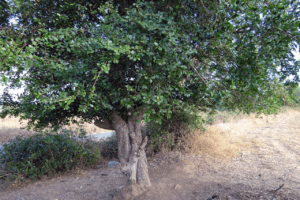Isaiah 56: 1, 6-7 (RM) or 1, 6-8 (RCL); Psalm 67; Romans 11: 13-15, 29-32 (RM) or 1-2a, 29-32 (RCL); Matthew 15: 21-28 (RM) or (10-20), 21-28 (RCL).
It’s happened to me, more than once. It’s a familiar tale told when women who work in all-male or male-dominant professions share our stories. During the discussion at a meeting, a female colleague is recognized, and then presents a proposal, a suggestion, or an overlooked insight. A brief uncomfortable silence follows, then someone changes the subject. A few minutes later a male colleague repeats the same proposal or idea, and suddenly the guys start exclaiming excitedly, “Hey what a great suggestion he made! Let’s do it!”
I was rather proud of the time I spoke up loudly at a seminary faculty meeting, addressing the secretary: “Let the record show that I made the initial proposal and G. seconded it.” There was a stunned silence. For a nanosecond. Then the guys changed the subject.
Our Gospel story today is a delight on several levels, especially considering its original background. In the version of this story in Mark, the woman is a Syro-Phoenician. Here she is identified as a Canaanite. Remember that in last week’s walking-on-the-stormy-water story, Jesus had sent his disciples over into Canaanite territory. The Canaanites were the original inhabitants living on the land that the Hebrews invaded and settled, claiming that control of this land had been promised to them by God. So the person addressing Jesus to ask for healing for her daughter is not only stigmatized by being a woman – she is an Indigenous woman. Jesus is meeting her on her own land, among her own people. Canaanites were not part of “the house of Israel.” Indigenous Christians in Canada will say, “We are not the Hebrews. We’re the Canaanites.”
This story also illustrates the fact that Jesus’ own concept of who he was and what his mission entailed only developed with time, prayer and experience. Initially the early Church was caught between evangelizing only “the lost sheep of the house of Israel,” or going out to all peoples regardless. This text depicts a similar process of gradual coming-to-awareness on the part of Jesus himself.
And Jesus was called to this monumental, life-shifting realization because he listened to an Indigenous woman when she spoke up and presented a clever response. He conceded her logic. He did indeed grant her request and freed her daughter from a terrible malady.
What would happen if all the voices at the table were not only “heard into speech,” but actually listened to? What if their testimony were granted a claim on truth? What if their reasoning and insight, their joys and pain, arising from an unimaginably rich variety of experiences, were followed to their logical conclusions? We might see a tectonic shift in our entire worldview, never mind our ecclesiology. As well we should.
Today’s Gospel passage is also a good argument in favour of persistence. What if the woman had bowed her head in humiliation and slunk away in shame? But she didn’t. She probably looked him in the eye, thought fast, and came up with a compelling counter-argument.
Commentator Beth Porter writes,
“To most of us, Jesus would seem shockingly rude, and the woman’s persistence all the more remarkable. Why does she demean herself by continuing her plea? The answer lies in her great love for her daughter and her conviction that Jesus is a holy person. I imagine that Jesus’ voice conveyed immense kindness the second time he spoke.”
The moral? I think: Be uppity. With persistence. And love. And faith.
© Susan K. Roll
This Reflection is a revised version of the Reflection written and sent for August 16, 2020.
Susan Roll retired from the Faculty of Theology at Saint Paul University, Ottawa, in 2018, where she served as Director of the Sophia Research Centre. Her research and publications are centred in the fields of liturgy, sacraments, and feminist theology. She holds a Ph.D. from the Catholic University of Leuven (Louvain), Belgium, and has been involved with international academic societies in liturgy and theology, as well as university chaplaincy, Indigenous ministry and church reform projects.





Contextualizing this story as one of an Indigenous woman, whom Jesus is meeting on her land, among her own people, give it a freshness that speaks to contemporary challenges. The fact that this Indigenous woman calls Jesus to a new understanding of himself calls to each of us as well.